Straight up, I’m going to tell you that the title is factual. This post is about three tomato stories. Three short stories.
Tomato Story One
Late September in Indiana is a delightful time of year except for one thing – tomato season is nearly over. For me, in fact, it is over. This morning, I picked my last ripe, juicy, shiny red orb of delight. I had to cut back on planting tomatoes to a single plant this year. When I purchased it, the tag sticking out of the soil at the base of the plant clearly said, “Super Sweet 100 Cherry Tomato.” It was a lie. It was not a tiny variety of tomatoes at all. That lie was revealed a few weeks later when the little green fruit kept growing until it was a big green fruit. It ripened, I ate it, I liked it. That process repeated throughout July and August, but as we ventured into September, brown leaves announced that the party would soon be over.
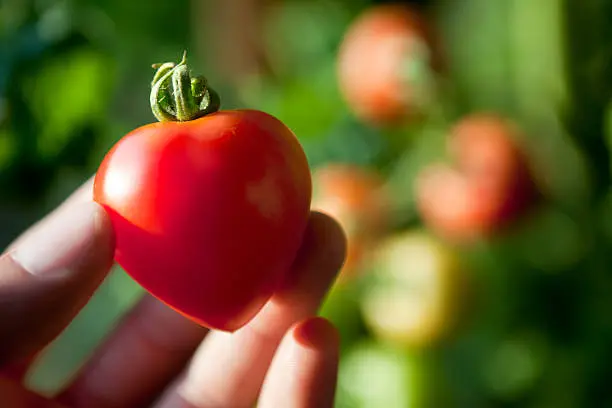
There really is nothing like a home-grown tomato. Plump and juicy, a flavor explosion lies just below the surface, waiting to be released. My readers in Kansas, Iowa, California, and Colorado will claim their tomatoes are the best, and they might be right. (Indiana ranks second only to California in the quantity of processed tomatoes grown and produced annually.) Give me an Indiana tomato – a big, beautiful Indiana Beefsteak tomato any day. I’ll use it on a bacon lettuce and tomato sandwich, atop a cheeseburger, or sliced thick and served with cottage cheese and a drizzle of balsamic vinegar! Sigh, when the season ends, the grocery store variety is pretty much the sad and unfulfilling alternative. There are, however, options.
Tomato Story Two
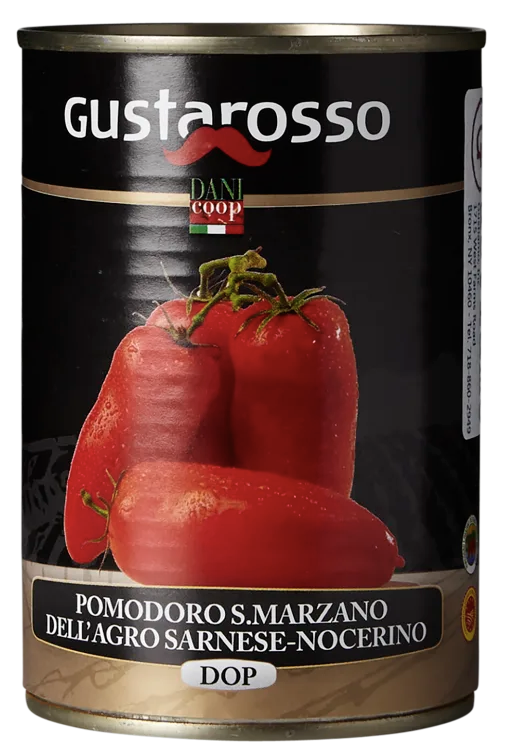
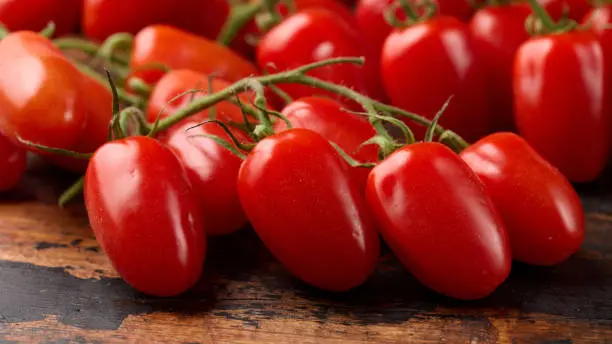
It was a total coincidence that on the same day I plucked my season-ending tomato from the vine, this video should have found its way into my email inbox. It is, at eleven minutes, longer than I usually post here. Nonetheless, it is an informative look at one of the world’s premiere tomatoes – the San Marzano of Italy. If you have more than a drop of Italian blood flowing through your body, you already know this. The San Marzano tomato is almost always found canned. However, that is far from a tragedy because this is the perfect tomato for sauces, soups, pizza, and any Italian food. What I found impressive is that once the harvest is over and the factory has completed canning, the factory shuts down, albeit not entirely. You can learn more in this video. It is in Italian with English captions.
Tomato Story Three
After viewing the San Marzano video, a thought came to mind. I live less than thirty minutes away from one of the most extensive tomato processing facilities in the country. They employ over 1500 people, and another 600 or so are added as temporary workers during the harvest season. I wondered if they shut down at the end of the season.
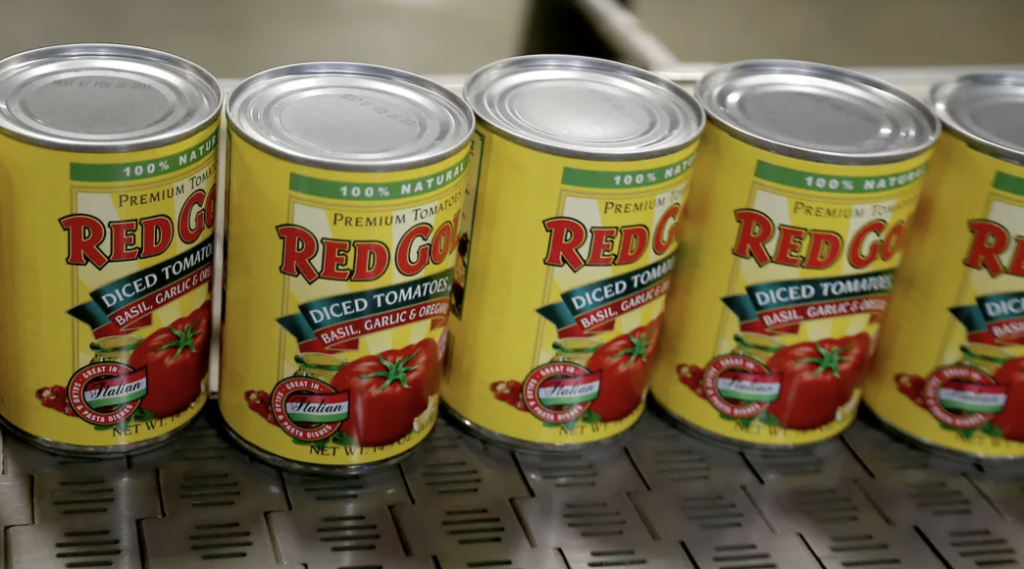
The Red Gold tomato processor has three Indiana locations. It can process tomatoes whole, chopped, diced, or turned into juice, sauce, and paste. Only about 10 percent of the products rolling off Red Gold’s lines bear its own label. The rest bear grocery store brand names and other private labels. The tomatoes are sourced locally from over 11,000 acres cultivated under contract with individual farmers. Farmers from Michigan and Ohio also participate. An acre of land can yield 60 tons of tomatoes in a good year! But what happens at the factory when the harvest is completed?
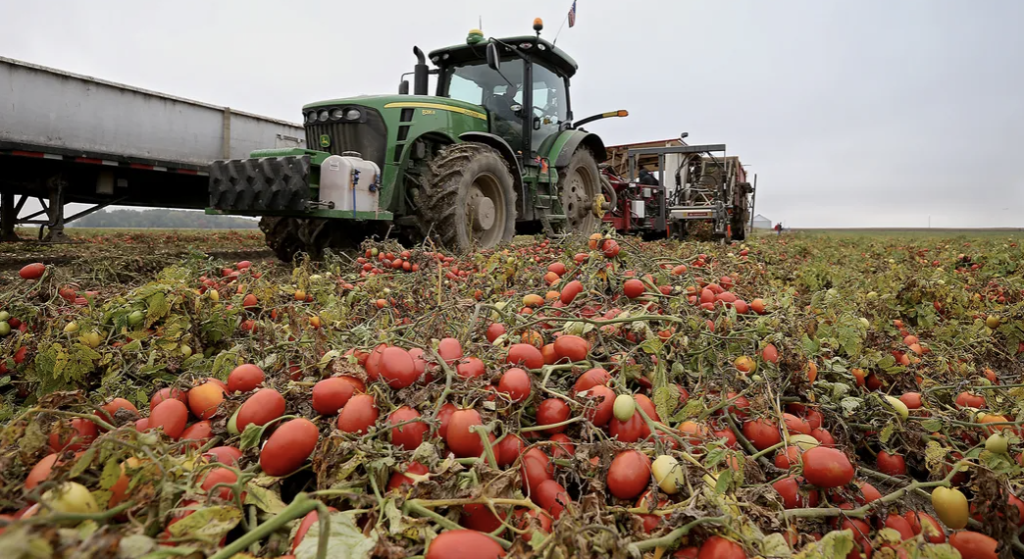
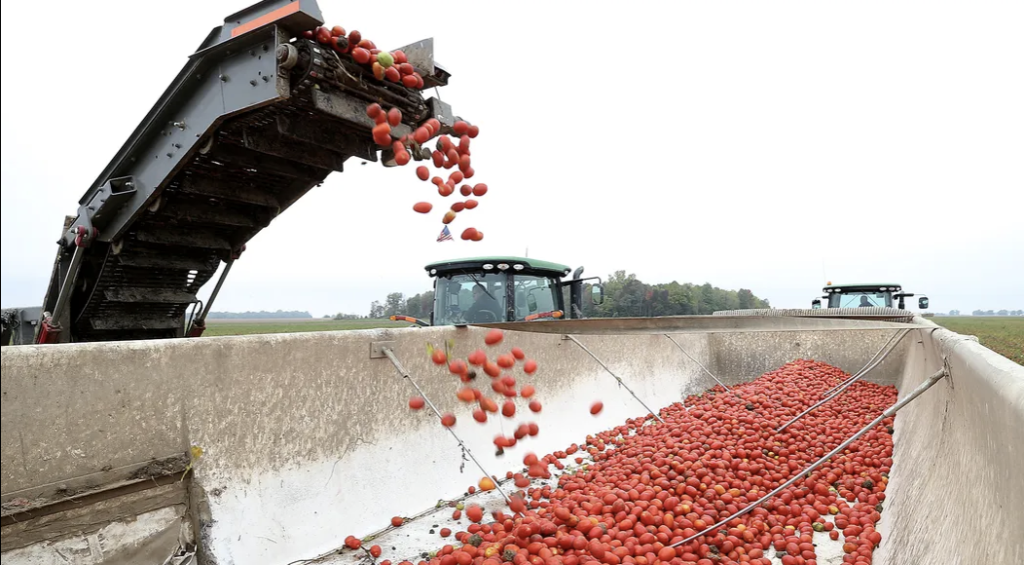
Tomatoes are too fragile to be stored like corn in silos, and frost ruins them. They have to be processed immediately. The more than one million-square-foot Orestes, Indiana plant needs only 12 minutes to take a 22-ton load of tomatoes fresh from the field, wash and peel them, and put them up in cans in all the forms that consumers want, from whole to diced, and sauce to salsa. Canning lines hit speeds of 800 cans a minute — too fast for the eye to follow a single can.
Red Gold, a family-owned company founded in 1941, buys large bins of tomato paste from California for the off-season production of sauces, juice, and ketchup. Those products are produced year-round. During the fresh-pack season, tomatoes that don’t make the grade for canning also go into sauces. The factories operate all year long.
Shiny steel cans move quickly along various assembly lines. At the right time, they’re filled and sealed. Then cans are mechanically grouped into the desired quantity and packaged on pallets.
Steve Smith, longtime senior director of agriculture for Red Gold in Orestes, Indiana, says, “We don’t label our peeled, canned tomatoes on the assembly line. “They go into storage, and labels are applied later once customers place orders. We pack for many different labels.”
So, if you buy a name brand versus a chain-label brand, are you getting the same product? “It all depends on what the buyer wants,” Smith says. “Sometimes they’re the same, and sometimes they’re not. We have different grades of tomatoes, and some brands will ask for a different grade. The Red Gold brand is reserved for premium tomatoes.”
Watch the video to see how all this tomato love goes into the can and is still there when you open it.

Welcome to 3-Minutes A Day University, where you can learn a little about a lot of things every day in three minutes or less. We help you expand your knowledge and understanding of the real world, and 3-MAD University is tuition-free. Our wide-ranging syllabus includes a fascinating insight into topics including Health and Medicine, Science, Sports, Geography, History, Culinary Arts, Finance and the Economy, Music and Entertainment, and dozens more. You will impress yourself, your friends, and your family with how easy it is to learn facts and perspectives about the world around you. One topic you will never find covered is politics. We hope you enjoyed the previous three minutes. If you liked this post, please pass it along to a friend.
Was this email forwarded to you? Subscribe Here.
© Copyright 2024. 3-Minutes A Day University All Rights Reserved. Unsubscribe


Pamela Worrell
Loved this informative piece on my favorite fruit!!